21 Types of Aloe Vera Plants to Bring Variety to Your Garden
Author: Jen Worst | Editor: Omar Alonso
Review & Research: Jen Worst & Chris Miller
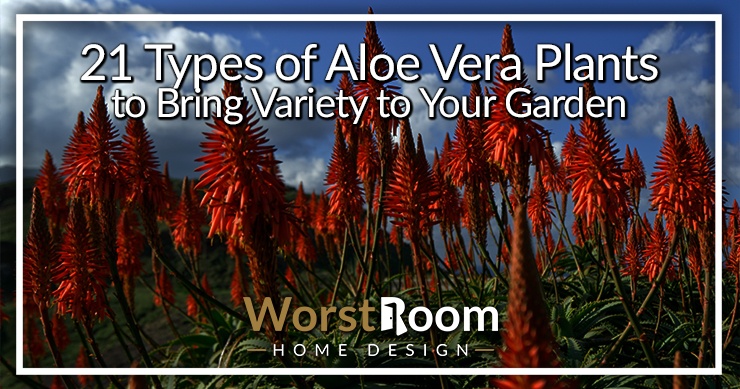
The wonder plants, the various types of aloe, has been grown by us for thousands of years. When we think of aloe, undoubtedly, the famous aloe vera comes to mind.
But the genus aloe is quite broad, and besides aloe vera, there are many other types of aloe plants that also contain medicinal and decorative qualities.
Today, I will introduce you to some of them that can be a new addition to your garden. Let’s start!
21 Types of Aloe
Aloe has not only been used around the world for thousands of years for various purposes, including health, cosmetology, and more, there has been extensive research into aloe's efficacy in all of these areas. Things are looking good for it!
While all common aloe plants hail from Africa, they vary by many factors. Here are a few of the most popular aloe types available. Make sure you know how to propagate succulents once you've chosen which plants you want.
Lace Aloe
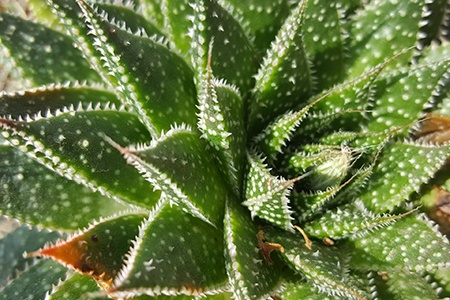
- Scientific Name: Aloe aristata
- Native Area: South Africa
- Height: Up to 9 inches
- Sunlight Requirement: Full to partial
The Lace Aloe gets its name because of the unique shape of the plants. The leaves are green, fleshy, and have spines and bumps along them. They have white spots all over them and lacy white trim around the body, hence its name.
It is a relatively short, soft, and succulent plant. The leaves grow in a rosette shape, which is unlike typical aloe.
This aloe is one of the few that holds up well in the winter. Even weather as cold as 19 degrees F cannot do any harm to these plants.
However, make sure to keep them in well-drained soil because one thing it cannot hold up against is soggy soil. Deserts are perfect for them because of dry soil and good drainage.
If you want to get its pretty orange flowers, keep the plant above 10 degrees Celsius.
Short-Leaf Aloe
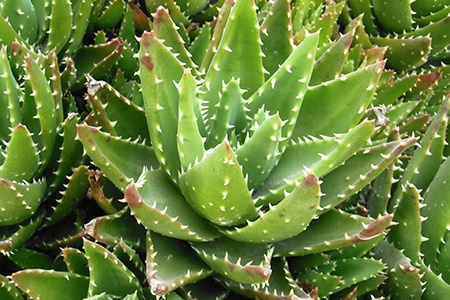
- Scientific Name: Aloe brevifolia
- Native Area: Southwest Africa
- Height: Up to 4 inches
- Sunlight Requirement: Full
Similar to the previous plant, Short-Leaf Aloe leaves have serrated white teeth on the edges. This species is particularly small, reaching about 4 inches tall.
The leaves are accordingly short and plump. Enough sun exposure gives the pale blue leaves a pretty rose-pink or golden-yellow tint.
This plant grows in small clusters, making a carpet of pretty rosettes. Because the plant is short, it makes them a great choice if you want to cover up an area of your garden.
You’ll get tubular orange flowers in late Spring from this plant. They usually bloom only once every year. The plant grows in Spring and Autumn, and it gets dormant in winter and summer.
These plants thrive in rock beds with good drainage and plenty of sunlight.
Torch Aloe
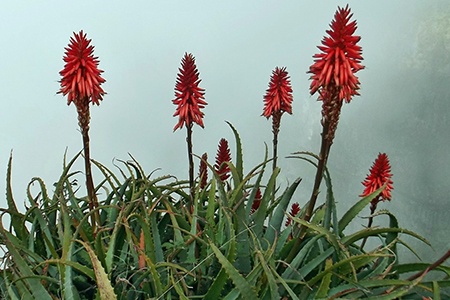
- Scientific Name: Aloe arborescens
- Native Area: South Africa
- Height: 5 feet
- Sunlight Requirement: Full
Sometimes called the torch aloe and sometimes candelabra aloe, this succulent is evergreen and perennial. These types of aloe may be called Mountain Bush aloe or Krantz aloe.
The name comes from the stems that shoot upwards towards the sun that have red flowers that bloom on the tips, each looking like a lit torch. Due to how many there are, they can resemble types of candles on a candellabra, too.
Sunset Aloe
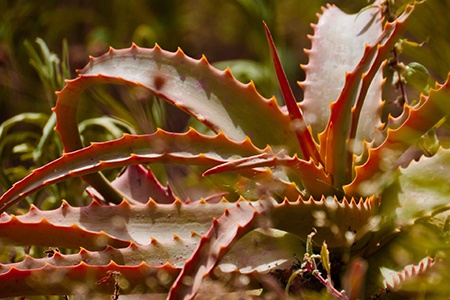
- Scientific Name: Aloe dorotheae
- Native Area: Tanzania
- Height: 6 to 12 inches
- Sunlight Requirement: Full
If you are looking for aloes for purely decorative purposes, you must get this. The stunning plant contains leaves that resemble a sun, with yellow, pink, and orange hues on top of the green.
It will stand out wherever you put it. But in particular, it will excel as ground cover in your garden. The colors are flashy enough to not fade into the background without taking away attention from your garden’s focal pieces.
You’ll also find prominent teeth on the leaves. The flowers are tubular and greenish-yellow in color. They contain nectar, and therefore, attract bees and birds. So, by planting these, you’ll be helping out mother nature!
This plant requires moderate watering when it is growing and less frequent watering when it is dormant, so maintenance is low. Another unique trait is that these repel deer.
Tiger Tooth Aloe
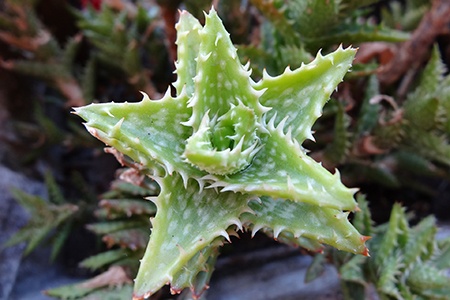
- Scientific Name: Aloe juvenna
- Native Area: Kenya; East Africa
- Height: 24 inches
- Sunlight Requirement: Full to partial
This variety is a relatively small aloe that has more teeth than most aloes – giving it the name. Native to Kenya, Tiger Tooth Aloe grows its leaves in clusters of triangles. It does not need much water and thrives in a rocky, hot environment.
Tiger Tooth Aloe is a stemmed plant that grows small leaves on a long stem. This stem can grow as tall as 24 inches.
Don’t get alarmed by its menacing-looking spikes, though, because they are lithe and soft. These long spikes add a certain charm to the plant if you ask me.
This plant does not bloom as often as other aloe plants, but when it does, you’ll be rewarded with long, red flowers.
Partridge Breast Tiger Aloe
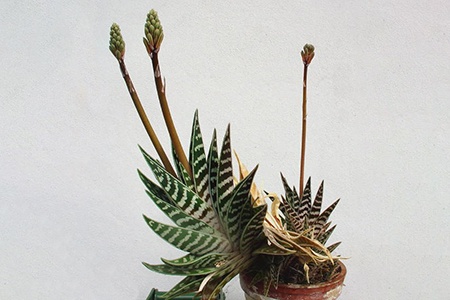
- Scientific Name: Aloe variegata
- Native Area: Northern South Africa
- Height: 4 to 6 inches
- Sunlight Requirement: Full
Unlike the Tiger Tooth types of aloe above, this one doesn't derive it's name from the teeth on the leaves, but the white stripes that grow on the leaves that resemble tiger stripes.
It grows well even in the winter, which allows for you to enjoy its flowers year after year as long as you provide it with water at the right intervals. Simply water and let the well-draining soil become completely dry before watering again.
Spiral Aloe
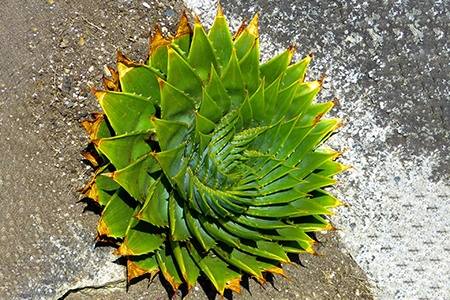
- Scientific Name: Aloe polyphylla
- Native Area: South Africa
- Height: 9 to 12 inches
- Sunlight Requirement: Full
The Spiral Aloe is a stemless aloe that grows its leaves into a distinct and gorgeous spiral shape. Its exquisite beauty makes it one of the most photographed Aloe plants, despite not being very common.
The fleshy green leaves of this plant form a spiral shape as it grows. It is not clear why they grow this way, but botanists believe that this shape ensures that the plant as a whole gets the lightest exposure.
Also, the repetitive shape is easy to make, requiring less energy from the plant.
Usually, a spiral begins to form only when the plant reaches a diameter of 8-12 inches—this plant blooms in early Summer and Spring. The flowers are strikingly gorgeous in a salmon-pink shade.
Growing this plant outside of its natural habitat may prove to be a challenge, but it is doable with the proper care and growing conditions.
Soap Aloe
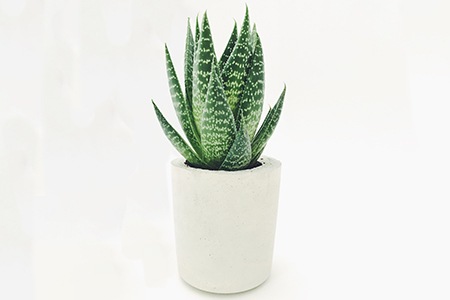
- Scientific Name: Aloe maculata
- Native Area: Southern Africa
- Height: 18 inches
- Sunlight Requirement: Full to partial
Soap aloe is named such because it's sharp toothed, lance-like leaves will secrete a residue that has the texture and consistency of soap. This sap was used to make soap in the past.
Before then it picked up other names like Broad-Leaf aloe, Zebra aloe, and African aloe. It grows well in Australia as well as Africa.
Snake Aloe
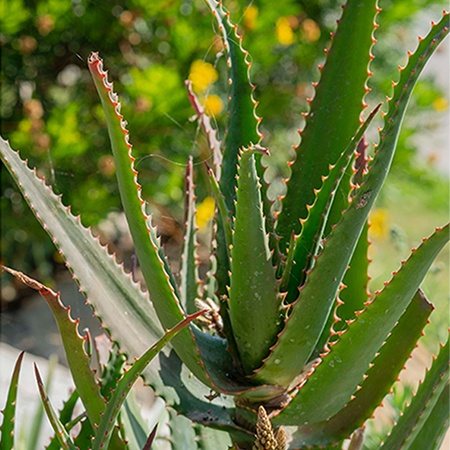
- Scientific Name: Aloe broomii
- Native Area: South Africa
- Height: 1 to 3 feet
- Sunlight Requirement: Full to partial
Snake aloe is one of the most famous decorative succulents you’ll come across. That is because of the plant’s attractive pale green color.
You’ll find tiny reddish-brown thorns along the edges of the leaves. This plant is frost-resistant and suitable for dry areas.
The stem of these types of aloe plants are short, while the leaves are long. Typically the plant grows with a single stem, but instances of clusters forming 3 rosettes can also be found.
Its flowers look like snakes due to the expanded bracts. The unique thing about this plant is its flowers. These flowers have a lemony scent, which attracts birds.
Like most aloes, this one fares well in well-drained soils. Rains can damage it, so keep it away from the rain.
Red Aloe
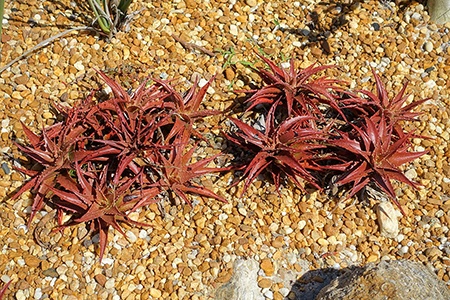
- Scientific Name: Aloe cameronii
- Native Area: Zimbabwe; Malawi; Southeast Africa
- Height: 1 to 2 feet
- Sunlight Requirement: Full
Here’s another plant popular for its leaf color. As you can already deduce from the name, this aloe plant has leaves with a color that ranges from green to bright copper-red.
The dryer the climate, the redder the leaves are. So, if you have it, don’t overwater it to preserve the color.
This plant blooms reddish-orange flowers around late fall and early winter. The flowers produce nectar, which makes them popular among bees and birds.
These aloe types are slow-growing plants that can live for up to 40 years, given that you give it the proper growth conditions and care.
Red aloe loves to bask in direct sunlight, so don’t keep it under any shade. You can, at best, keep it under partial shade.
Golden Toothed Aloe
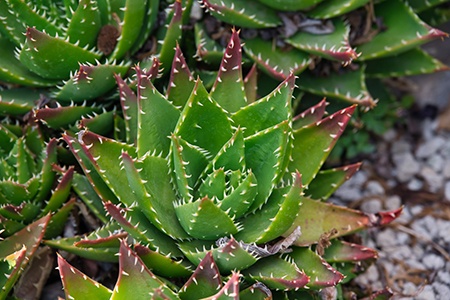
- Scientific Name: Aloe nobilis
- Native Area: South Africa
- Height: 6 to 12 inches
- Sunlight Requirement: Full
Golden Tooth Aloe is a small, rosette-style aloe that packs a punch. It is little, rose-like, spikey, and extremely cute. The spikes are yellow and are present all over the plant. Its leaves are bright green, which turns into orange if kept under full sun.
While this plant does enjoy being in the full sun, you should move it to the shade every afternoon to prevent burns on the leaves.
The plant blooms in the summertime; it gives red tubular flowers that can be really long (around 60 centimeters or 2 feet).
Because it stays under full sun, you can easily use this plant as a ground cover. It will complement the other plants of your garden well because of the green and red combination. This plant does not require much pruning. It looks great in an herb spiral too!
Malagasy Tree Aloe
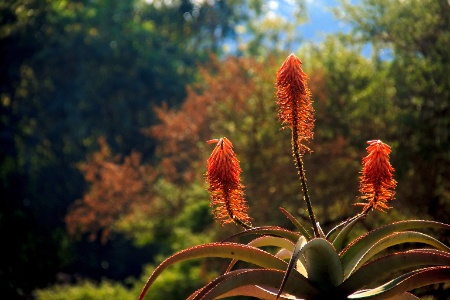
- Scientific Name: Aloe vaombe
- Native Area: South Madagascar
- Height: 8 to 12 feet
- Sunlight Requirement: Full
If there’s one thing you know about the types of aloe vera plants, it is that these plants don’t grow that tall. Well, mostly, that is true. But Malagasy Tree Aloe is an exception to that.
This is a showy plant native to Madagascar. Once the plant grows to be mature, stalks start growing on which red flowers bloom. It gives the plant extra height, as well as a unique look.
These flowers attract all kinds of pollinators, including bees, hummingbirds, butterflies, etc. They produce a lot of seeds, which have a high rate of germination in moist and hot places.
The leaves of Malagasy Tree Aloe are fleshy, fat, and contain tiny white thorns. Usually, they are deep green. But they turn a bright dark red if kept under full sunlight.
This plant would make an excellent focal point in your garden. Although they are native to Madagascar, they can be grown in hot areas such as Arizona and Texas. If that matches your place of living, then definitely consider getting these.
Tree Aloe
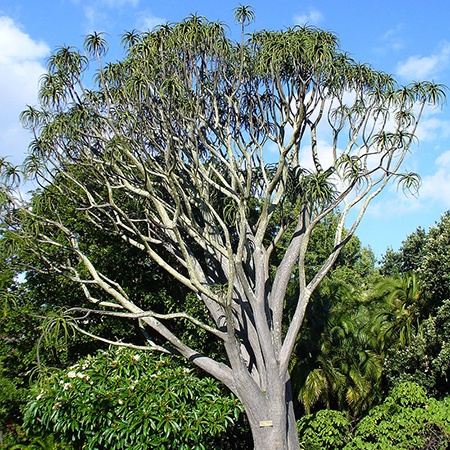
- Scientific Name: Aloe barberae
- Native Area: South Africa
- Height: 60 feet
- Sunlight Requirement: Full
Unlike the Malagasy Tree aloe, this Tree aloe actually grows into a tree that can reach up to 60 feet in height. It grows leaves at the end of its trunk and branches that feature a toothed margin. Otherwise the leaves are striped, alternating between light and dark green.
Aloe Rosii
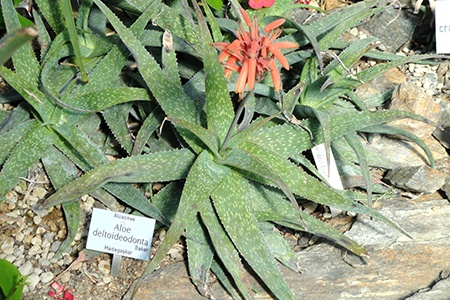
- Scientific Name: Aloe deltoideodonta
- Native Area: South Madagascar
- Height: 12 inches
- Sunlight Requirement: Full or shaded
These types of aloe vera, like many of their siblings, hail from south-central Madagascar. They're capable of surviving with very intermittent access to water and can withstand the full heat of the sun's rays or can do just as well in partial shade.
The plant can grow up to 1 foot tall, where each individual leaf tends to max out around 8 inches in length. They're fairly typical in appearance, growing in a star-shaped cluster.
Spider Aloe
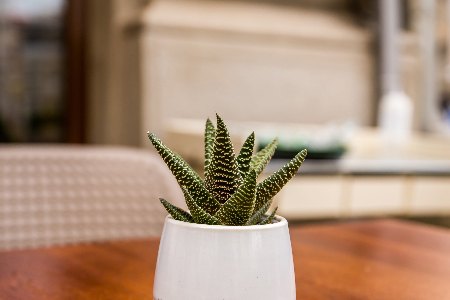
- Scientific Name: Aloe humilis
- Native Area: South Africa
- Height: 8 inches
- Sunlight Requirement: Full or shaded
Also known as Blue Dwarf aloe, Hedgehog aloe, and Dwarf Hedgehog aloe, the Spider aloe has these names due to being compact and growing very low to the ground. They prefer full sunlight but can survive in the shade though this can make them vulnerable to disease and pests.
The green leaves are covered in white spots and have bumps or spikes on them. You must make sure the water drains well around these or they'll rot with standing water.
Red Aloe
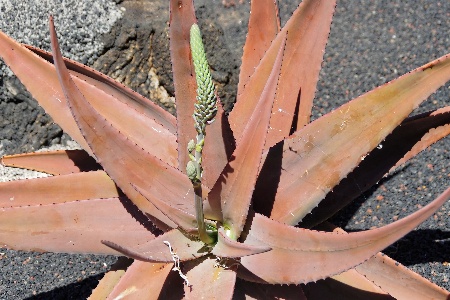
- Scientific Name: Aloe cameronii
- Native Area: Zimbabwe, Malawi
- Height: 1 to 2 feet
- Sunlight Requirement: Full
This slow growing aloe can live up to 40 years and more when given the optimum conditions. Some call this suckering aloe Cameran's Ruwari Aloe, but the simple name Red Aloe stuck because it's the most obvious physical attribute. The leaves are a dark red.
Frome late autumn and during the winter this plant will grow spikes on stems that stick straight up that will bloom orange and red flowers. This plant has a musky and cinnamon scent to it that makes it a pleasure to have around. They look pretty amazing and kind of similar to some types of protea flowers, which you could consider planting together.
Climbing Aloe
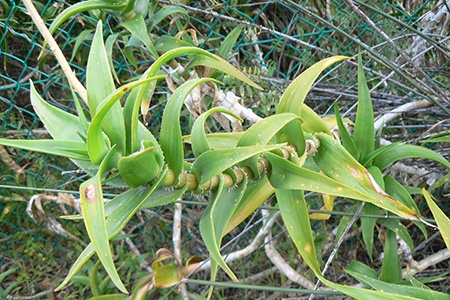
- Scientific Name: Aloe ciliaris
- Native Area: South Africa
- Height: 8 to 12 feet
- Sunlight Requirement: Full
These climbing aloe varieties grow to monstrous heights by shooting thin stems and leaves upwards that can cling and anchor themselves to other types of vegetation like climbing vegetables.
Make sure they have full sun or you run the risk of the plant not producing a bloom, which defeats the point. You should expect this blooming to occur between November and April, with a shorter range in colder areas.
Cape Aloe
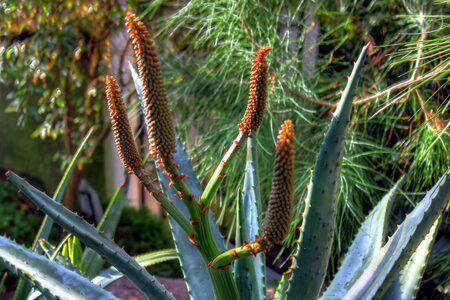
- Scientific Name: Aloe ferox
- Native Area: Southern Africa
- Height: 6 to 9 feet
- Sunlight Requirement: Shade
Sometimes called Bitter aloe, Cape aloe vera types grow tall and spiky. The leaves inspire some to call it Alligator Jaw aloe. This allow will find open plains and spread across vast distances, making it a sight to behold.
Fan Aloe
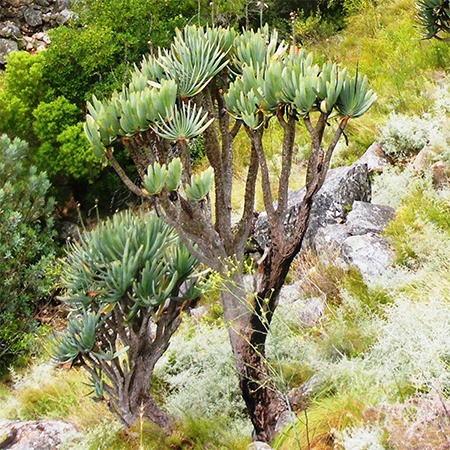
- Scientific Name: Aloe plicatilis
- Native Area: South Africa
- Height: 8 feet
- Sunlight Requirement: Full
Fan aloe is a champion, being able to tolerate extremely hot and dry summer seasons but also handling the cold temperatures of winter (as long is it gets full sunlight then). If you have it in a container and can give it partial shade during the summer, that's preferable.
It's given the name it has due to the fan-shaped leaves. It's a succulent shrub that ends up much larger than the kind you may keep on your desk in a tiny pot.
Coral Aloe
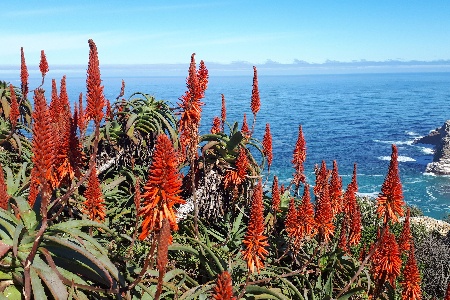
- Scientific Name: Aloe striata
- Native Area: South Africa
- Height: 18 inches
- Sunlight Requirement: Full
The name 'striata' comes from the very faint stripes you can see along the succulent's green leaves. The popular name 'coral' comes from the orange and red flowers that bloom on this ornamental plant.
These thrive best in the USDA Hardiness Zones 9 to 11. These aloe types enjoy lots of sun in desert climates, but can survive in partial shade as long as they get a lot of sun in the afternoon time.
Mountain Aloe
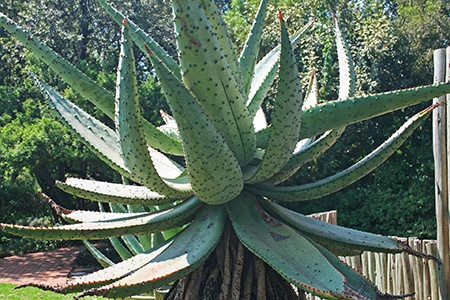
- Scientific Name: Aloe marlothii
- Native Area: South Africa
- Height: 8 to 10 feet
- Sunlight Requirement: Full
Sometimes called Flat-Flowered aloe and Spiny aloe, the name Mountain aloe comes from its ability to thrive in the rocky mountainous regions of South Africa, Botswana, Mozambique, and Zimbabwe, among others.
These aloe varieties have a broad base from which flat leaves spread out. From the core of this rosette the leaves taper to a sharp point, reaching as much as 5 feet in length.
Types of Aloe Plants for Every Climate
Aloes are exquisite plants that require very little care, which makes them an ideal plant for beginners.
There are many other types of aloe plants that I have skipped. Once you get acquainted with the ones I talk about, try to pick some for your garden, balcony, or windowsill. I promise you won’t regret it!



